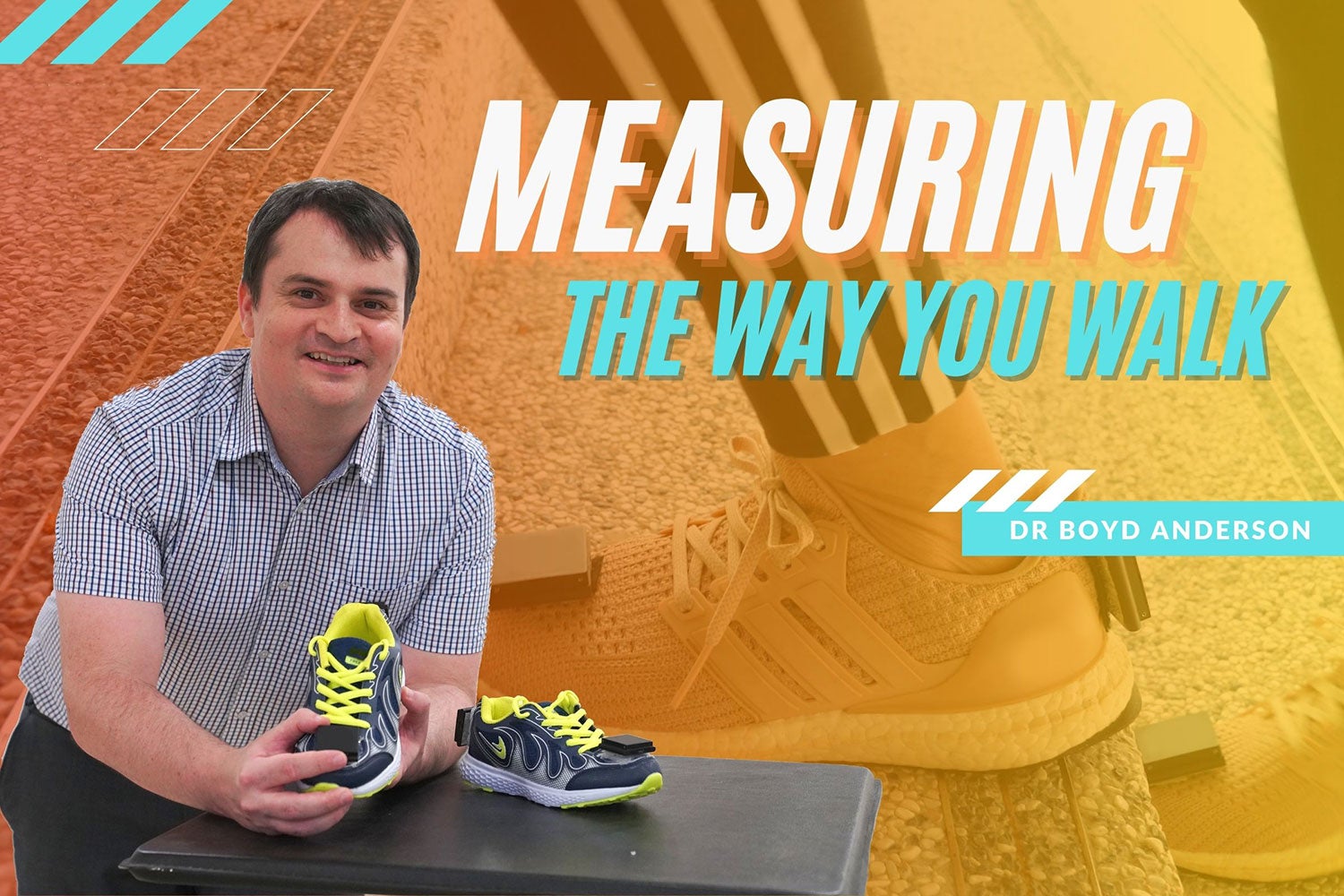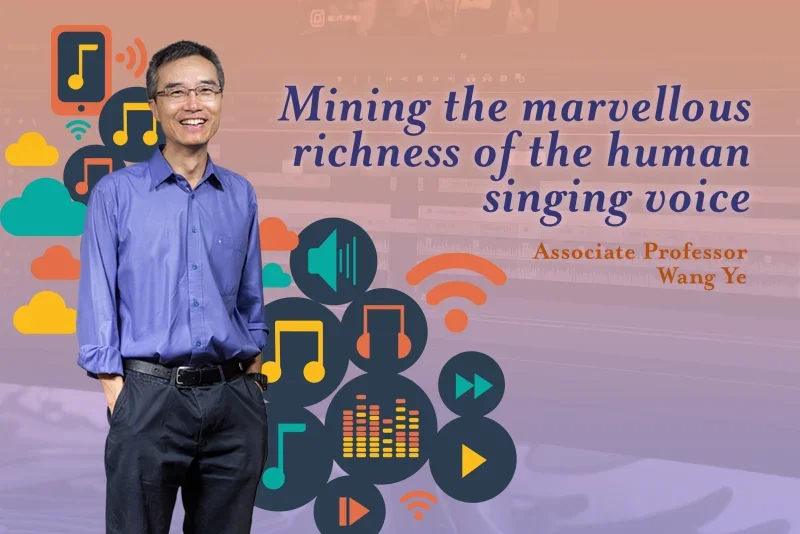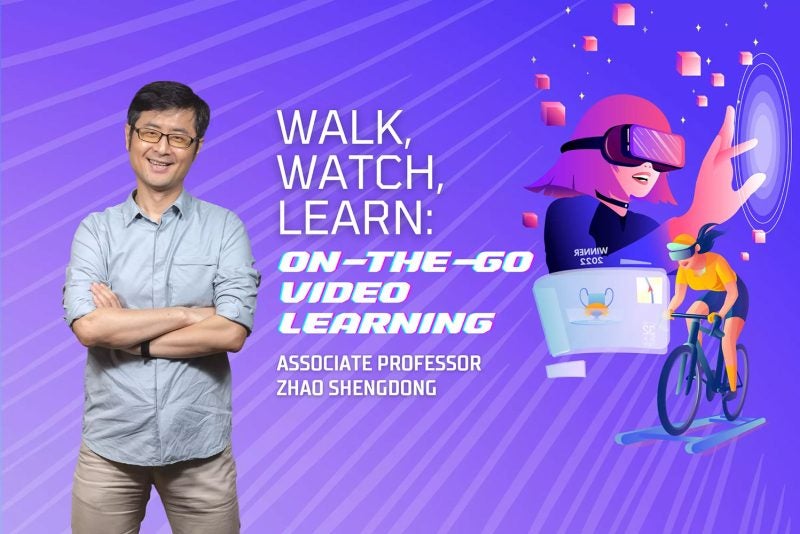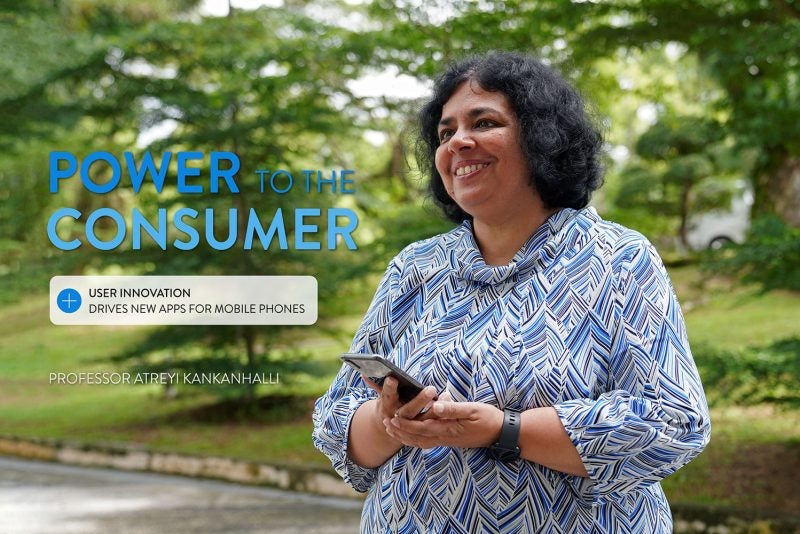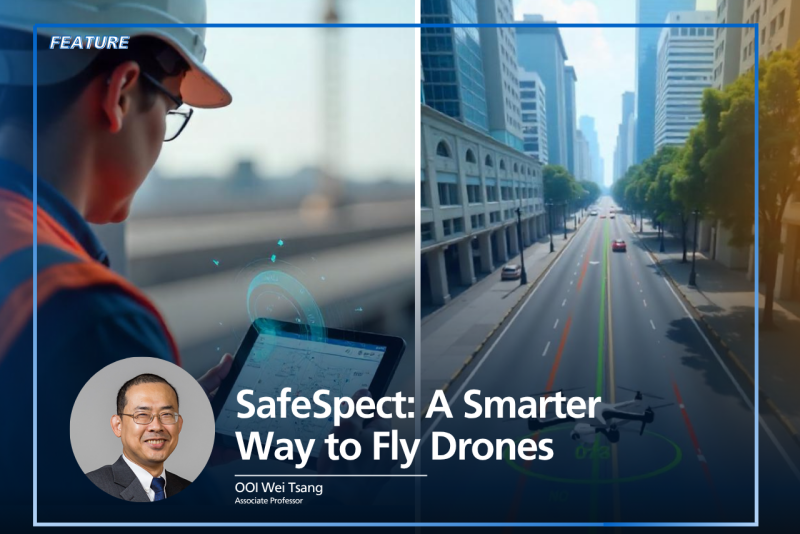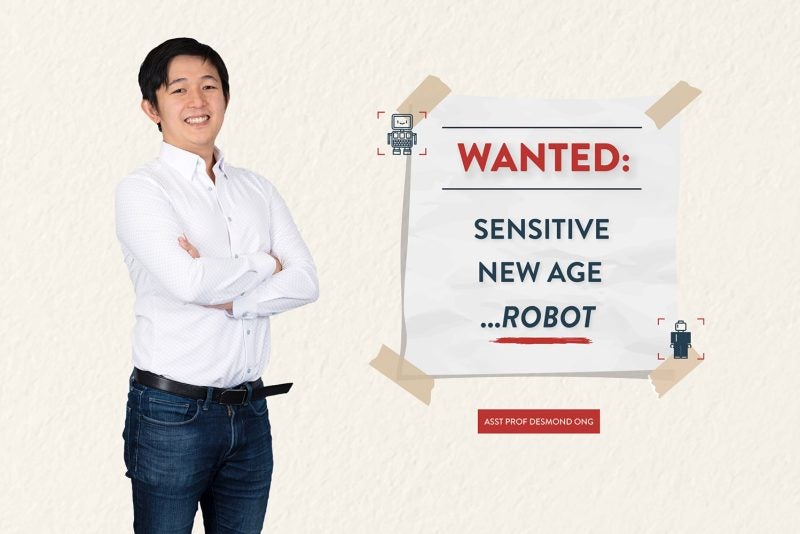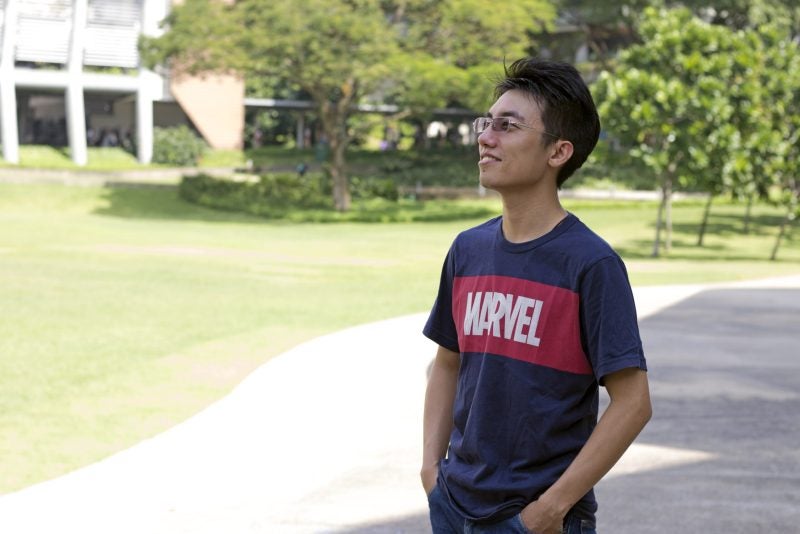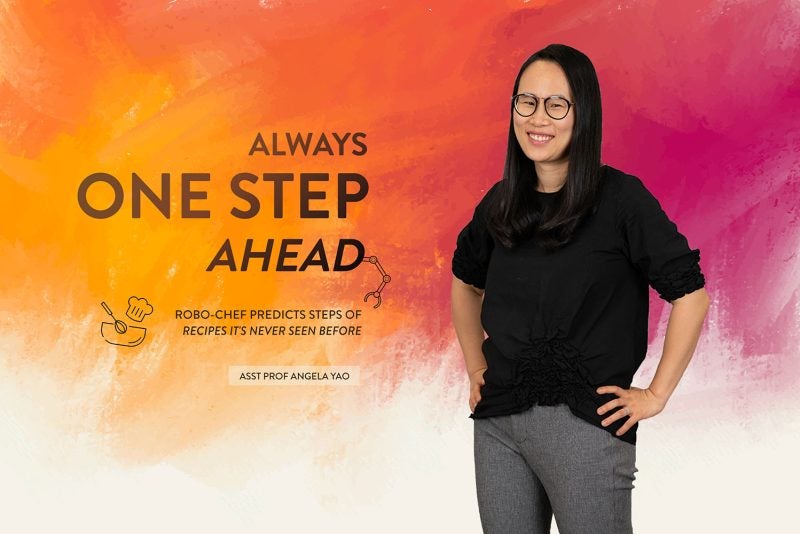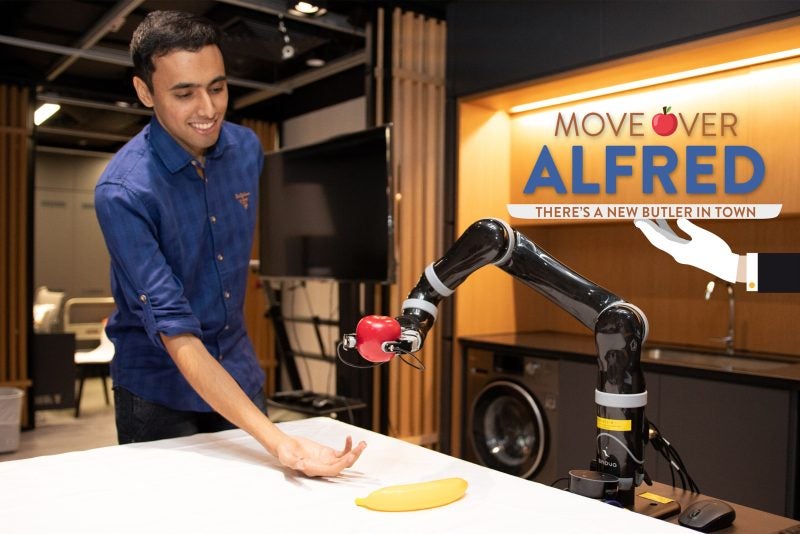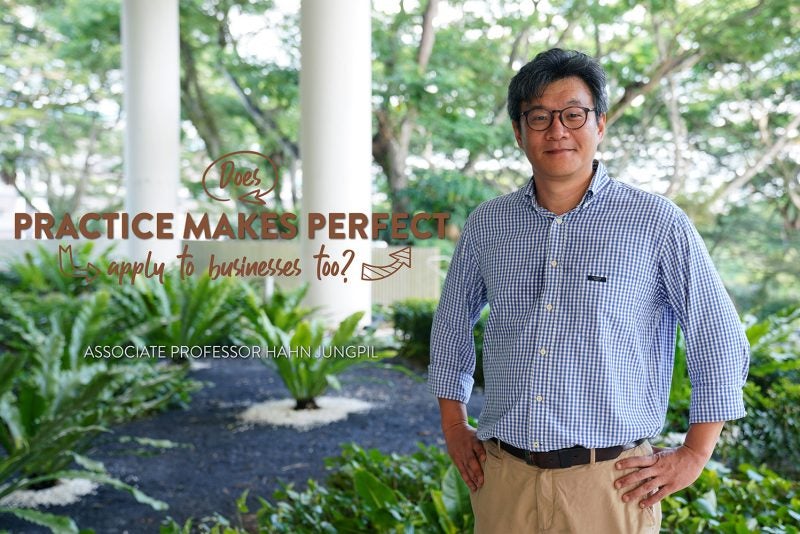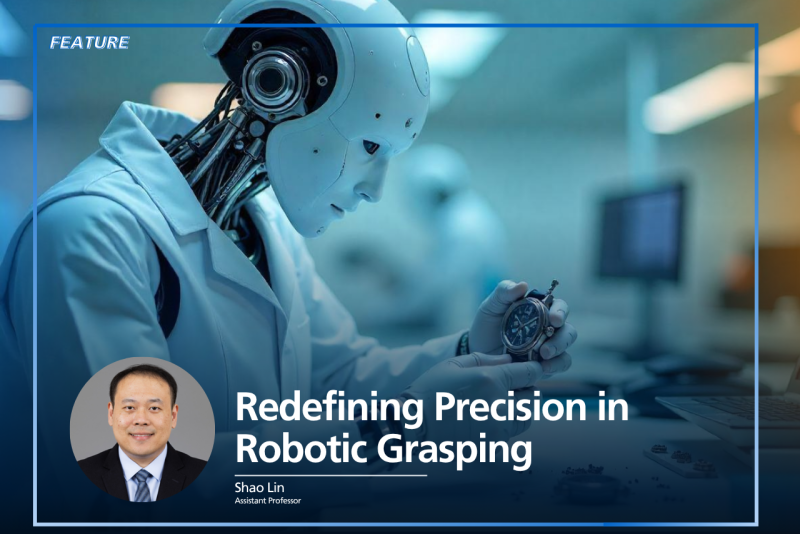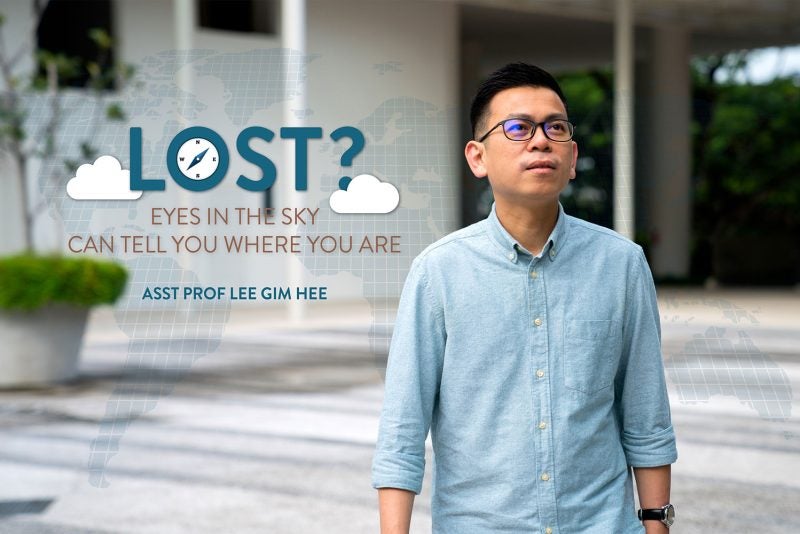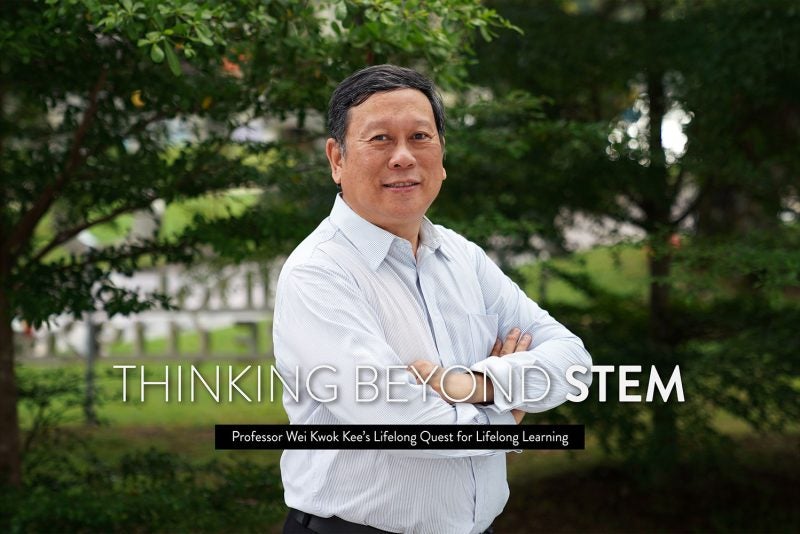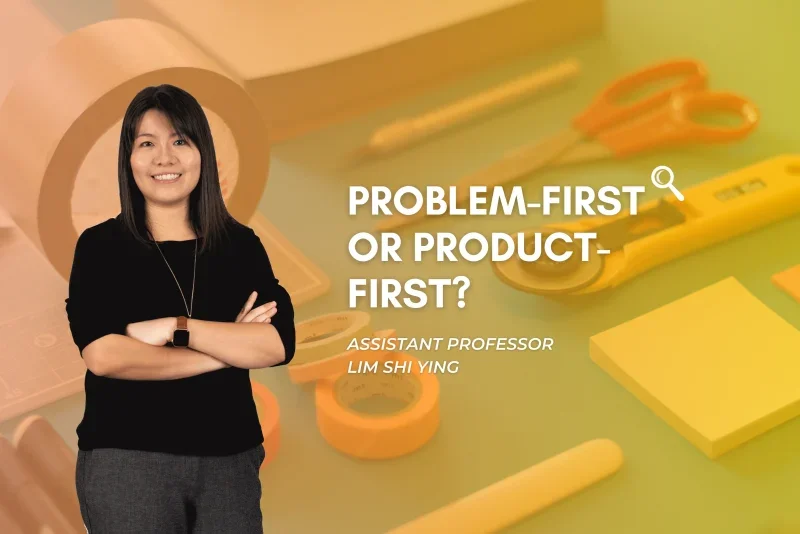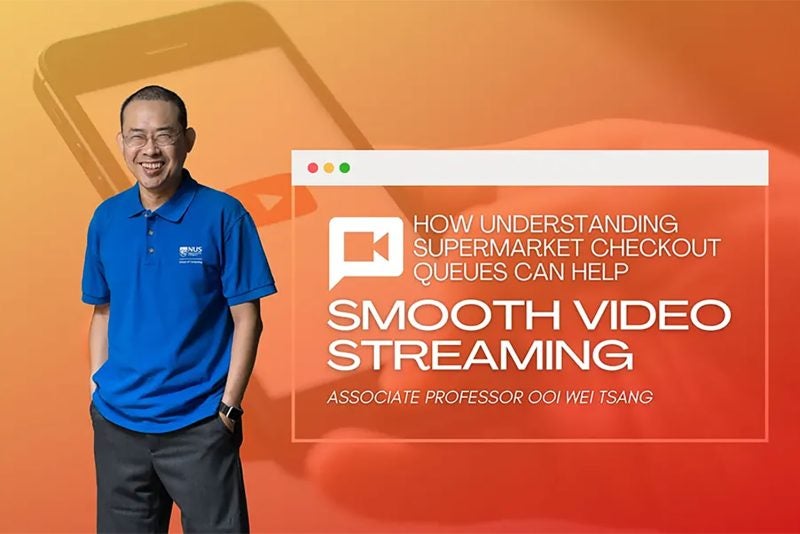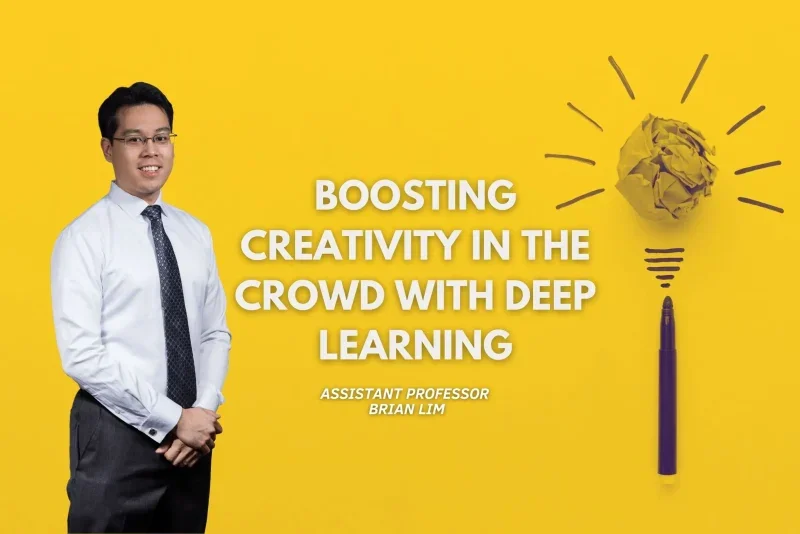Life has a funny way of leading people down paths they least expect. Just ask NUS Computing lecturer Boyd Anderson. Two years ago, Anderson, then a PhD student, found himself at Mustafa Centre, a 24-hour mall in the heart of Singapore’s Little India district. It was 3 a.m., and Anderson was throwing what seemed to be a random assortment of things into a shopping cart: a hot glue gun, Velcro tape, disposable socks, and 12 pairs of sneakers, each a different size.
“The lady at the counter didn’t even bat an eyelid,” recalls Anderson with a laugh. He was on a late-night retail spree, but it wasn’t the culmination of a drunken escapade. Rather, it was a mission-oriented one — to gather supplies for his latest experiment to study the way people walk.
That October night in 2018 was a far cry, both physically and professionally speaking, from where he was just four years ago. Back then, Anderson was in his hometown Wellington, New Zealand, analysing when vehicles stopped working and predicting warranty costs for his Master’s degree.
“But somewhere at the back of my head, I felt I wasn’t helping humanity,” he says. “And so I started to look for something that would be more useful to the world rather than just the bottom line of a car company.”
Anderson’s soul searching brought him to Singapore, where he now studies human locomotion, or the way the body moves when running or walking. Gait analysis is an important diagnostic of health. It can be used, for example, to monitor an elderly person’s risk of falling or to assess conditions, such as Parkinson’s Disease, which affect one’s motor skills. In addition, knowledge about kinetics is also useful in the world of sports science. “Sprinters, hurdlers, and athletes in track and field are interested in split times, the placement of feet before you cross a hurdle, etc.,” says Anderson.
A tiny chip
Today, scientists and healthcare practitioners use an array of instruments to analyse gait. There are motion capture systems, treadmills, and special walking mats. For studies that take place outside of the confines of laboratory or hospital settings, there are wearable sensors that can be affixed to shoes.
Most sensors rely on an embedded device called an Inertial Measurement Unit (IMU), which is typically found in the navigation systems of flying craft such as airplanes and drones. IMUs determine a subject’s position and orientation through the use of internal accelerometers, gyroscopes, and magnetometers.
The drawback, however, is that such measurements are not always the ones of interest when it comes to analysing gait. “For example, you’re measuring acceleration but not distance,” says Anderson. For the latter, you need bigger, bulkier equipment such as treadmills. IMUs sacrifice this ability for portability, rendering them incapable of directly assessing stride length, step width, and foot placement — important parameters that clinicians use to predict a person’s stability and fall risk.
“So I started looking at technologies that do ranging or distance measurements,” says Anderson, who by then had begun working with patients with Parkinson’s disease. “I tried a whole bunch of different things before stumbling upon UWB as a potential one.”
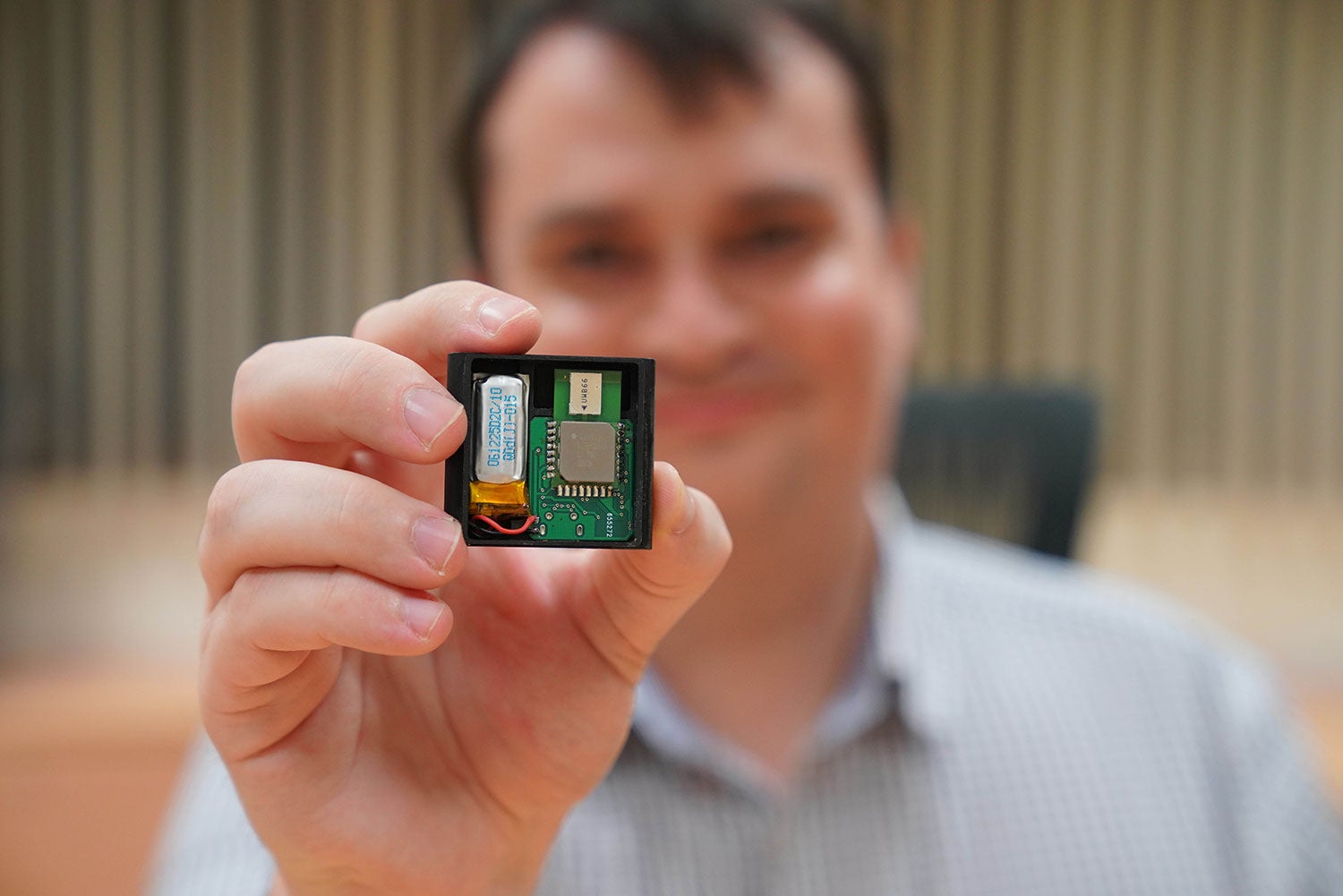
Apart from being power hungry, ultra wideband or UWB technology “checked all the boxes,” he says. UWB transmitters function akin to a radar, emitting high-frequency pulses in the form of radio waves to provide time-of-flight information which can then be used to determine distance down to the accuracy of a few centimetres — and all at a low cost.
The technology isn’t new (UWBs have been employed by the military and in hospital settings for years) but its miniaturisation in recent years — from the size of a printer, to a chip so tiny that even iPhone 11s have them — has been a game changer, says Anderson.
Portable and powerful
Believing that UWB could help improve gait analysis and make up for the shortcomings of IMUs, Anderson set about creating sensors that comprised both technologies — experiments that led him to his late-night shopping spree at Mustafa Centre.
With his new supplies, Anderson affixed two sensors to the toe and heel of each shoe. He then asked each participant he recruited for the study — a total of 21 healthy people — to walk across a special mat 15 times while wearing the sensor-containing shoes. The goal was to see if the new UWB-IMU fusion technology could measure both foot placement and stride width in the way that the pressure-sensitive walking mat (deemed the clinical gold standard) could.
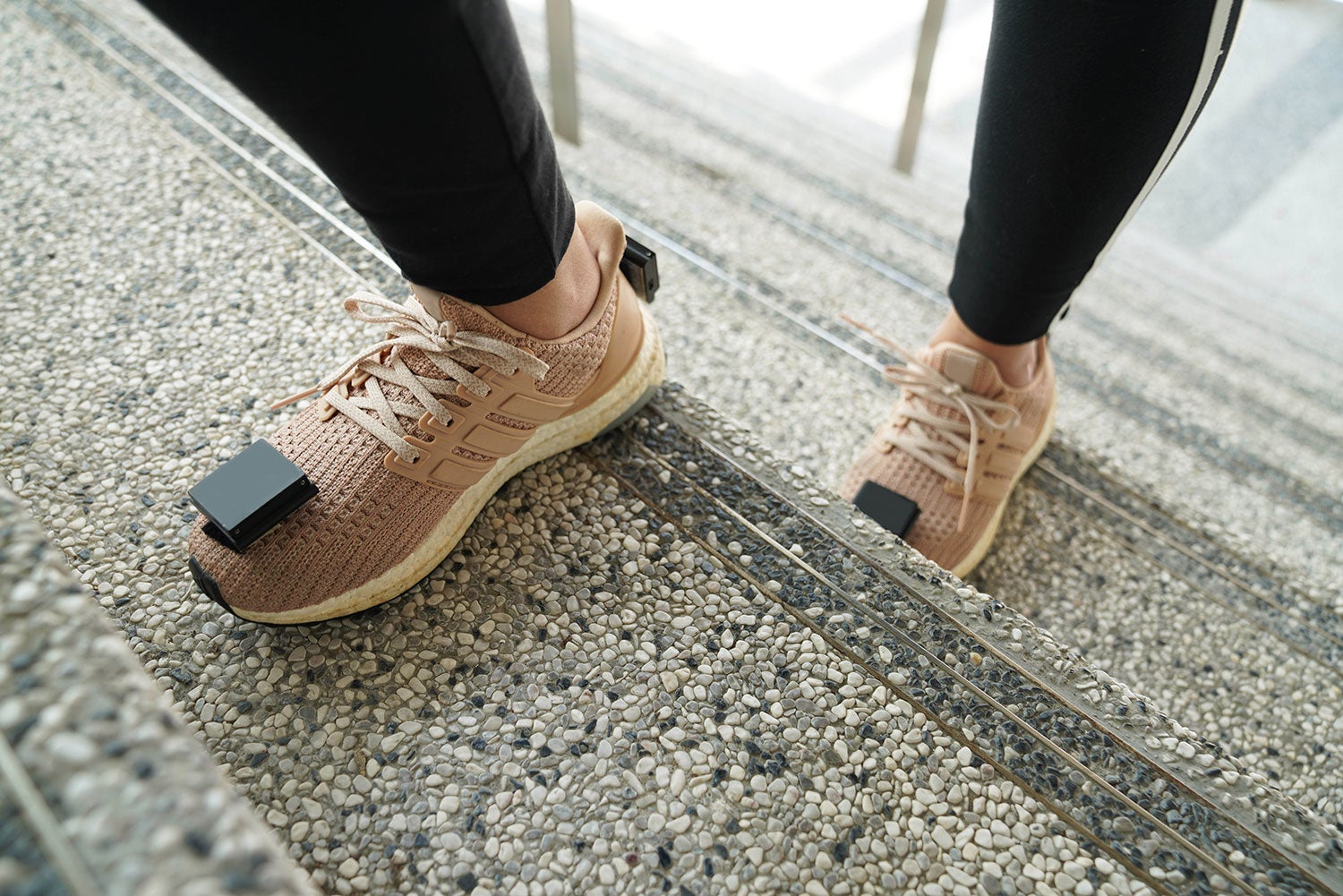
The results, which Anderson and his team report here, were more than encouraging. “We found that we could calculate standard gait metrics like step time and stride time using UWB sensors alone, and we could do it within a good margin of error compared to the gold standard,” says Anderson.
“We got easy, clear, intuitive graphs showing the distances of the feet getting further apart and coming together, further apart and coming together — things that are difficult or impossible to calculate using just IMU-based sensors alone,” he says.
The results demonstrate how UWB technology can supplement IMU-based ones in making gait measurements that previously only bulky, non-portable equipment such as treadmills and walking mats could, thus making such sensors truly of a wearable nature.
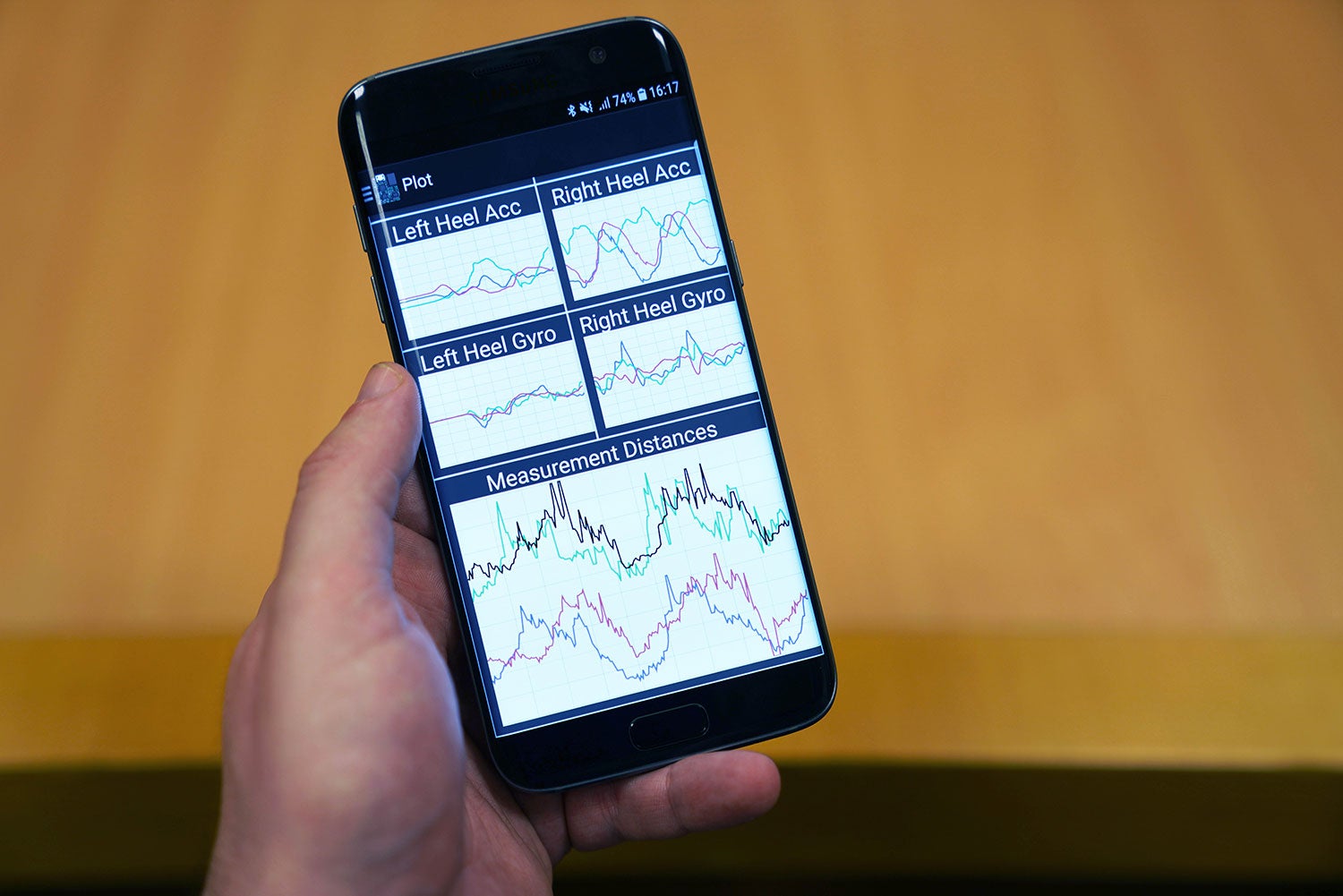
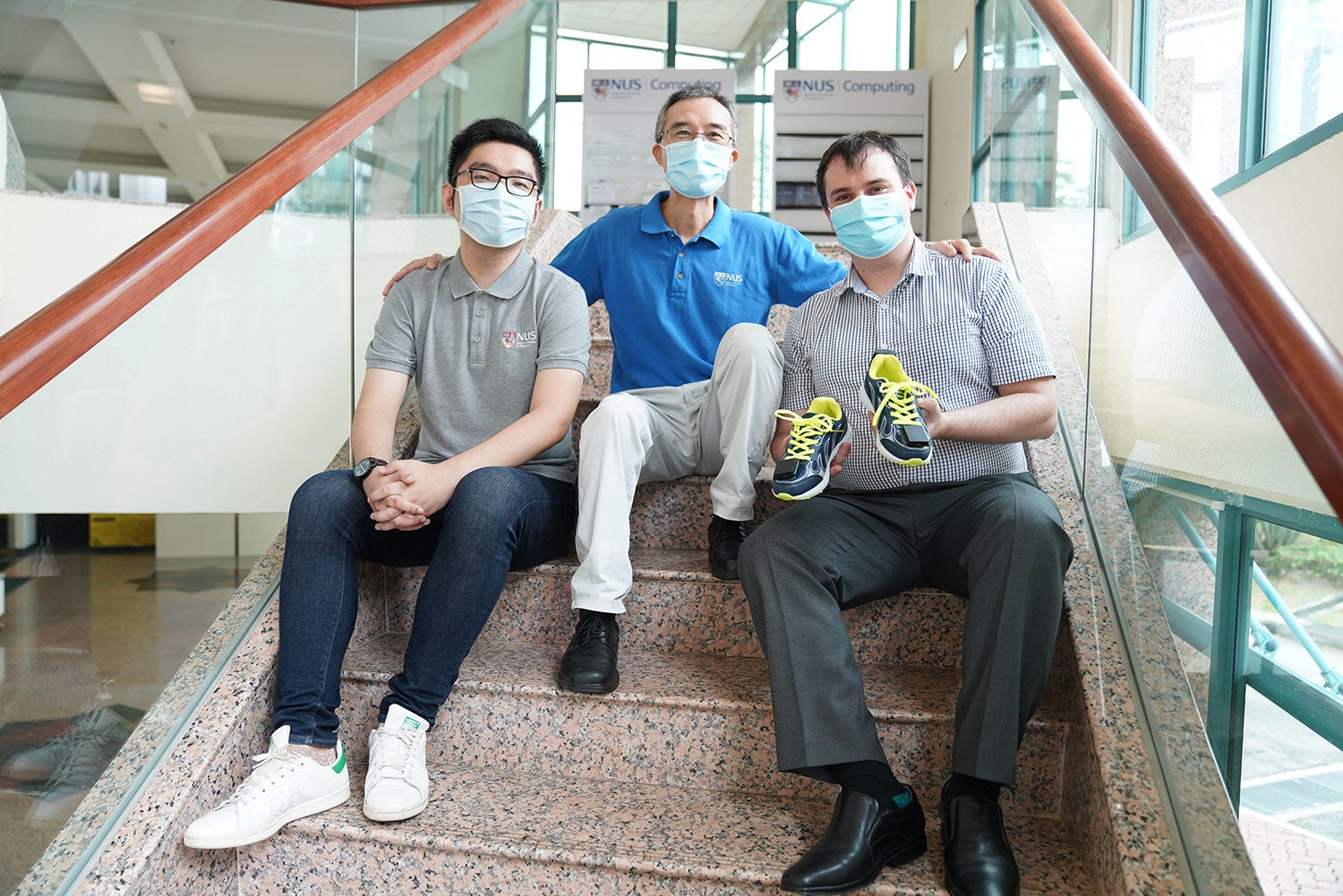
Since then, Anderson has co-founded a start-up called SoleMetrix, with the aim of bringing the technology to professional athletes. He is also working on refining the technology. He hopes to incorporate a larger machine learning component to improve the accuracy of measurements (from 2.5cm to 1cm) and to configure the system to measure other useful gait metrics such as base of support.
On the hardware side of things, Anderson hopes that one day users will be able to “just double tap and see the data,” similar to how Fitbit and other fitness trackers work.
The design aesthetics is another area with room for improvement too. “The clinicians we’ve spoken to all make a very good point, which is that the sensors need to disappear into the shoe or slipper and not be obvious to the user,” Anderson says. “We’re not there yet technology-wise, but maybe in the future, it will be possible to do that.”
There are also many other applications ultra wideband technology can be used in, he says. For example, the devices can possibly measure upper body movement, coordinate drones in flight, and even enable social distancing.
“It’s exciting to see what lies ahead for UWB,” says Anderson.

